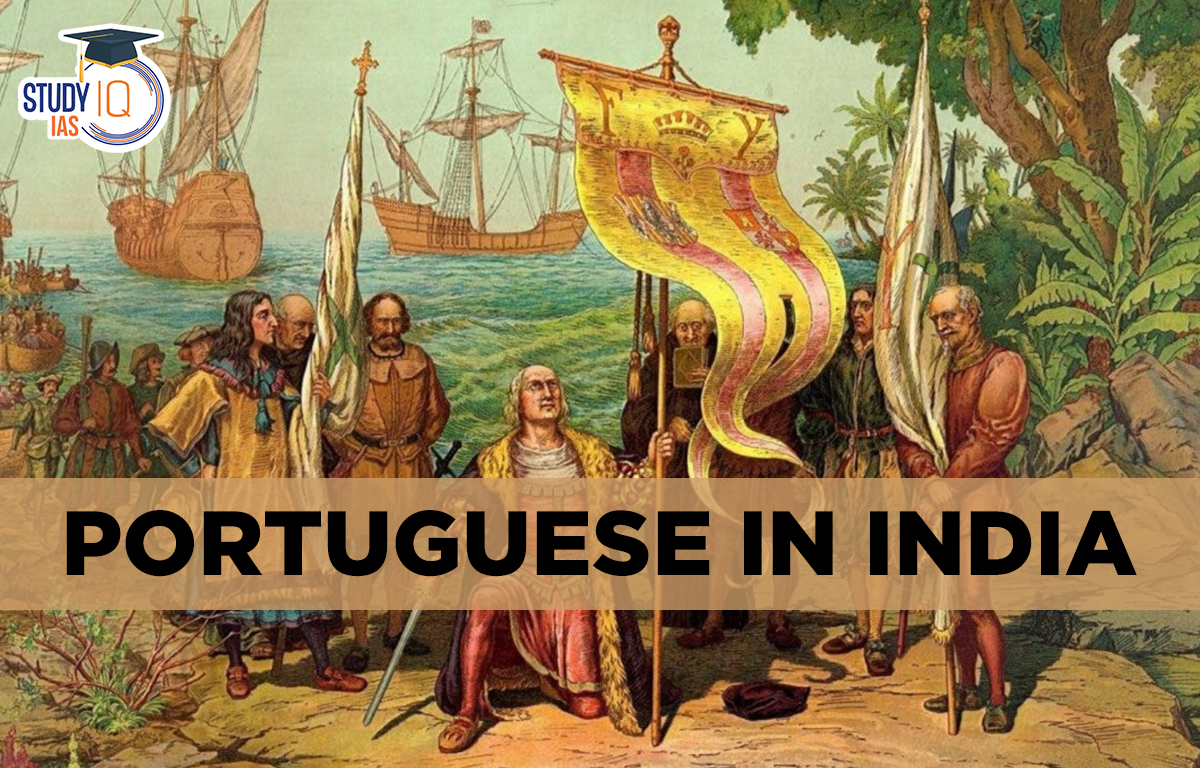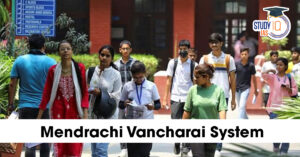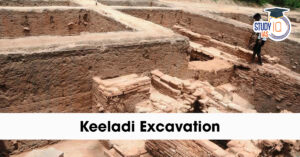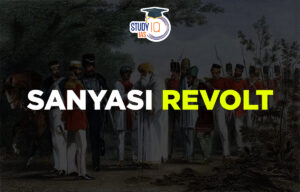Table of Contents
Portuguese in India
Learn all about Portuguese Portuguese in India. Estado da ndia, often known as Portuguese India, was the name given to the regions of India that the Portuguese ruled from 1505 until December 1961. The Portuguese were the first Europeans to find a direct maritime route to India. Vasco da Gama, a Portuguese navigator, arrived in Calicut, a significant seaport in South-West India, on May 20, 1498.
King Zamorin, the local tyrant, welcomed him and granted him some privileges. The Portuguese were immensely helped by their control of the coastal regions and naval superiority. You will learn about the Portuguese in this article, which will help you with your preparation for the UPSC Civil Service Exam on Modern Indian History.
Read about: Advent of Europeans
Portuguese in India History
Portugal and Spain made the first attempts to find trade routes. A major age of geographic discoveries was launched by the merchants and navigators of Portugal and Spain, who were supported and guided by their governments.
- In 1494, Spanish explorer Christopher Columbus sailed out for India but instead found America.
- Vasco da Gama of Portugal discovered an all-sea route between Europe and India in 1498.
- The Portuguese were the first Europeans to enter India, seeking to engage in direct trade with the country.
Vasco da Gama arrived in Calicut after sailing around Africa via the Cape of Good Hope. The goods he brought back was sold for 60 times what it had cost him to travel. However, Goa wasn’t taken from the monarch of Bijapur until 1510 AD, during the viceroyalty of Alfonso d’Albuquerque.
The Portuguese thereafter consolidated their dominance over the entire Asian coast, that is, from the Strait of Hormuz (Persian Gulf) to the Strait of Malacca (Malay Peninsula) and the Indonesian Spice Islands. The Portuguese were renowned for transporting valuable commodities, including calico, ebony, pearls, spices, pharmaceuticals, porcelain, silk, and gold.
Portuguese in India Rise
With the exception of Gujarat, which was ruled by the great Mahmud Begarha (or Begada) from 1458 to 1511, the northern region of India was significantly divided among various small-scale rulers. In the Deccan, the Bahmani Kingdom was breaking apart into smaller kingdoms. None of the powers had a notable fleet, and they had no intentions to increase their marine might.
The imperial proclamation of the Chinese emperor restricted the range of Chinese ships in the Far East. The Portuguese were more organised and cohesive than the Arab traders and shipowners who had previously dominated trade in the Indian Ocean. Additionally, the Portuguese put weapons on their ships.
The Portuguese had taken over several of India’s coastal regions fifty years after Vasco da Gama arrived. The Portuguese had controlled sixty miles of shoreline in the area of Goa. From Mumbai to Daman and Diu, as well as the approaches to Gujarat, they had control over a narrow strip of land that included four important ports and hundreds of cities and villages.
In the south, they held authority over a number of naval strongholds and trading ports, including Mangalore, Cannanore, Cochin, and Calicut. And even though their authority in Malabar was not great, it was enough to have some sort of influence or control over the regional monarchs who ruled the spice-growing area.
The Portuguese built settlements and military facilities at San Thome (near Chennai) and Nagapattinam on the east coast (in Tamil Nadu). By the end of the 16th century, Hooghly in West Bengal had developed into a wealthy community.
Portuguese in India Administration
In the Deccan, the Bahmani Kingdom was breaking apart into smaller kingdoms. None of the powers had a notable fleet, and they had no intentions to increase their marine might. The imperial proclamation of the Chinese emperor restricted Chinese ships’ range in the Far East.
The Portuguese were more organized and cohesive than the Arab traders and ship-owners who had previously dominated trade in the Indian Ocean. On their ships, the Portuguese also placed guns. The administration was overseen by the viceroy, who had a three-year reign, his secretary, and later a council.
The Vedor da Fazenda, who was in charge of revenue, cargoes, and fleet dispatch, was the next insignificance. Captains were in charge of fortifications from Africa to China, and they were assisted by “factors” whose power was exacerbated by communication barriers and was all too frequently used for personal benefit.
Portuguese in India Significance
The majority of historians concur that the Portuguese presence not only marked the start of the European era but also the expansion of naval power. For instance, the Cholas were a maritime power, but this was the first invasion of India by a foreign nation. The fact that the Portuguese ships were armed with cannons was the first step in securing a monopoly over trade through intimidation or physical force.
In the 16th century, the Portuguese used body armour, matchlock troops, and weaponry that were brought in by ships from the Malabar. However, the system of drilling infantry groups, which was put into place in the 1630s as a reaction to Dutch pressure and was based on the Spanish model, was a significant military contribution made by the Portuguese on land.
The Portuguese were experts in cutting-edge marine strategy. They were able to carry more armaments since their multi-decked ships were well-built and designed to withstand Atlantic gales rather than sail in advance of the typical monsoon. As the silversmith and goldsmith trades flourished, Goa became a centre for intricate filigree work, fretted foliage work, and metalwork incorporating diamonds. However, while churches constructed during the Portuguese era generally include elaborate woodwork and artwork inside as well as painted ceilings, the architectural designs are frequently simple.
Portuguese in India Impact
1. Initiation of the European Era
The beginning of the European era in India was with the arrival of the Portuguese.
2. Emergence of Naval Power
The ships from Portugal had cannons. Their multi-deck ships were robustly built. They distinguished themselves by employing a castled prow and stern to deter or launch boarding parties.
3. Military innovations
The Portuguese showed military innovation in their use of body armor, matchlock men. An important military contribution made by the Portuguese was the system of drilling groups of infantry, on the Spanish model, introduced in the 1630s as a counter to Dutch pressure.
4. Culture
In India, missionaries and the Church served as instructors and patrons of the visual arts, including painting, carving, and sculpture.
5. Metallurgy
Goa was a thriving centre for the silver- and goldsmithing arts. It became known for its intricate filigree work, fretted flora, and jewelry-embedding metalwork.
The Portuguese arrived in India as the first Europeans and left as the last. Vasco De Gama arrived in India for the first time in 1498. But it’s believed that Portugal ruled India from 1505 to 1961 throughout that time.
Portuguese in India Decline
In terms of religion, the Portuguese were intolerable and obsessive. They engaged in forced conversion, giving people the choice between Christianity and the sword. Their attitude toward religious issues was especially cruel to Indians, whose religious tolerance was the norm. Portuguese also engaged in lawlessness and inhumane treatment of others.
Portuguese merchants enjoyed far less influence and prestige than their landed aristocracy, which made it difficult for Portugal to preserve its dominions in the East. The missionaries had mixed up work and pleasure, and the merchants’ attention had been drawn away from trade by religious intolerance and the spread of religion. They fell behind in terms of shipbuilding expertise due to technical developments.
The productivity of Portugal’s international trade was negatively impacted by the authoritarian and corrupt nature of its judiciary. Together, the Danes and the English dealt the Portuguese trade a fatal blow.
The Islands of Bombay were given to King Charles II in 1662 as a dowry for marrying the Princess of Portugal. The British Navy turned out to be of a higher calibre than the Portuguese one. In the end, the Portuguese, with the exception of a few, lost all of their settlements and properties in India to the English or other forces. Consider Goa, Diu, and Daman.
Portuguese in India
Vasco De Gama arrived in India for the first time in 1498. However, it is believed that Portugal ruled India from 1505 until 1961. All the information regarding the Portuguese in India for UPSC preparation is provided in this post.


 Maharashtra’s Mendrachi Vancharai Syst...
Maharashtra’s Mendrachi Vancharai Syst...
 Keeladi Excavation: Uncovering the Ancie...
Keeladi Excavation: Uncovering the Ancie...
 Sanyasi Revolt, Objectives, History, Rea...
Sanyasi Revolt, Objectives, History, Rea...





















